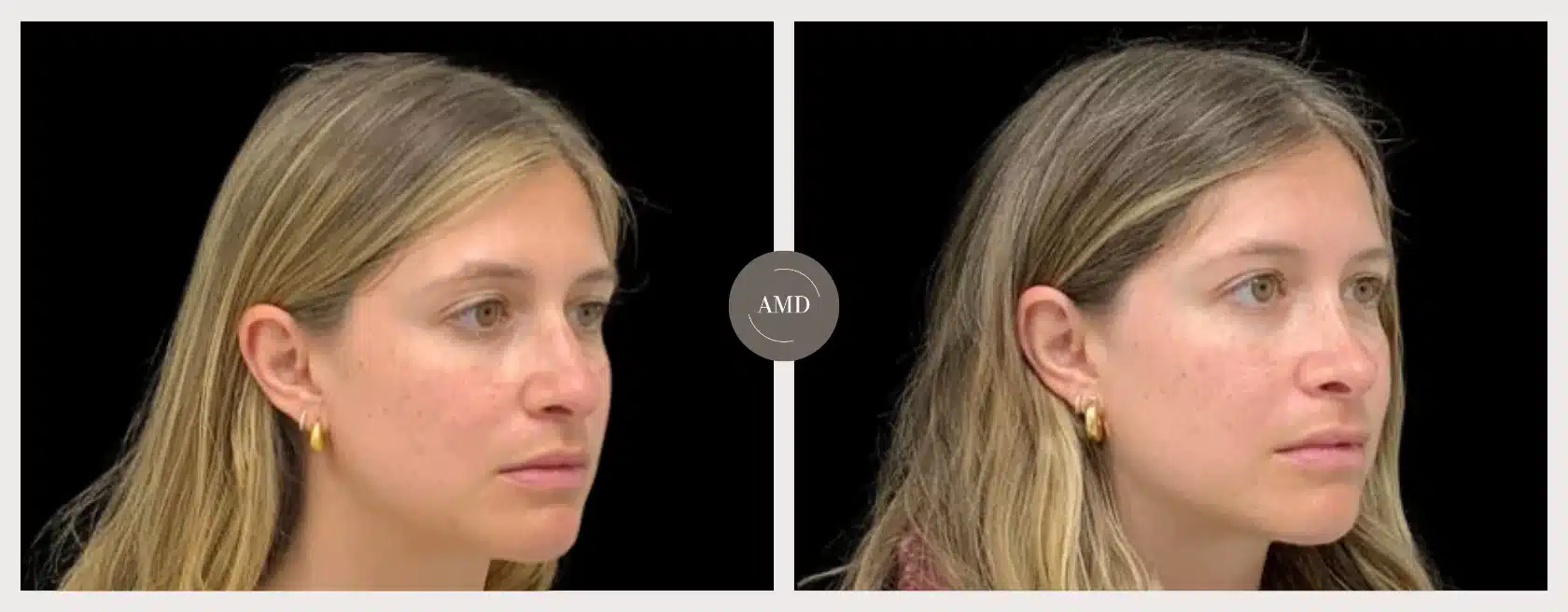What Types of Nose Jobs Are There?
Not everyone is born with a nose they like. For some people they can spend their entire life hating their nose and feeling insecure about how it makes them look. On top of that, they can also have difficulty breathing or suffer from constant sinus infections. Plastic surgery can improve the functional and aesthetic qualities of a nose by addressing the following:
- Breathing issues
- Large nose
- Bulbous tip
- Bump
- Hook nose
- Wide bridge
- Large nostrils
- Tip position
It’s important to note that there is not one ideal nose. Lots of people idealize having their favorite celebrity’s “perfect” nose, but the most important thing to keep in mind is that your nose should enhance your own unique beauty. Even some doctors have a signature nose that they create over and over again on every one of their patients. Dr. Mark Anton’s rhinoplasty is tailored to aesthetically balance your unique facial features. His work is the mark of a skilled and talented sculpture who knows how to enhance your beauty with natural looking results. His philosophy is that plastic surgery should be done in a way that no one notices anything but your balanced beauty.
Rhinoplasty or a nose job is a popular procedure for men and women of all ages. Noses are centrally important to both the aesthetic balance of the face and the functional balance of life. Without a nose that works well to allow good air flow, one does not sleep optimally and this decreases one’s daily vitality, decreases nightly drainage of brain metabolites and shortens cognitive lifespan. Noses are kind of funny appendages that come in all kinds of sizes and shapes. They become longer, bigger, & thicker with age and for women, noses change with hormones, particularly estrogen. Noses play a major role in defining your face, beauty, and self-confidence.
Two Types of Nose Jobs: Closed and Open Rhinoplasty

A closed rhinoplasty is a bit more common and is a “scarless” surgery because it does not require any incisions on the outside of the nose. This approach is mainly used for noses that have more symmetry but with a bump, bulbous tip, etc. An open rhinoplasty requires a stairstep incision along the columella, the tissue that connects the nasal tip to the nasal base. Open rhinoplasty is required if a nose is very large, if the nasal tip (underlying cartilage) is distorted or or in some cases when the patient has had a previous nose job and desires a revision.
With both open and closed rhinoplasty, various techniques are applied to reshape the nose to a more desirable aesthetic.
A large bump or hump requires an osteotomy, breaking or cutting the bone to create a straighter angle. If the bump only needs a subtle change, then rasping can be done for improvement
To correct a wide bridge, an ellipse of bone and cartilage (imagine the shape of a canoe) is removed, causing the bump to be completely removed and the bony side walls of the nose are released so they can fall inward thus narrowing the bridge and opening the eyes.
The tip can be refined and repositioned. To debulk a bulbous tip, cartilage is removed from the inside of the tip of the nose. The tip can also be raised to correct a hook nose or “witch’s” nose.
Breathing can be improved by cleaning out the airway. This could include straightening the septum in the event of a deviated septum and/or cauterizing and moving large turbinates (internal structures responsible for warming, humidifying and filtering the air we breathe).
Rhinoplasty is an outpatient procedure performed under general anesthesia at an accredited surgery facility using Board Certified Anesthesiologists. The procedure often takes about two hours. Now most people have this idea that a nose job really hurts. Dr. Anton’s rhinoplasty patients are pleasantly surprised to find that they experience only mild to moderate pain that is easily managed with pain medication and proper rest and recovery. This is mostly related to his techniques that minimize bruising.
After surgery you will go home to rest and recover. All patients will wear an external splint and some will have an internal split if internal breathing work is done. Internal splints look like straws with an opening on each end making it easy and comfortable to breathe. As with any surgery, it is important to honor the body’s healing time and follow the post-operative instructions explained and given to you during your pre-operative appointment one month prior to surgery. For the first two weeks all patients are instructed to abstain from any activity that raises heart rate or blood pressure including
- exercise of any kind
- sex
- stress or anxiety
- lifting or straining
- some daily activities
Internal and external splints are removed one week after surgery and this is not painful. The majority of swelling and bruising subsides after two weeks. Mild nasal tip swelling can continue up to a year after surgery as the tissues continue to remold and reshape into their optimal result. Post-operative dryness can be relieved with saline spray and ointment per doctor’s instructions. Patients who had their nose broken will not be allowed to wear glasses for six weeks after surgery.
The result of your rhinoplasty surgery lasts a lifetime. Once the splint(s) are removed you will immediately begin to see the shape of your new nose and appreciate the changes it makes to your overall appearance. Almost every rhinoplasty patient reports feeling more self-confident, beautiful or handsome. A rhinoplasty from a skilled provider, such as Newport Beach plastic surgeon Dr. Anton who is a Castle Conolly Top Doctor, can really enhance the functional and aesthetics qualities of your nose while sculpting away the distractions.





